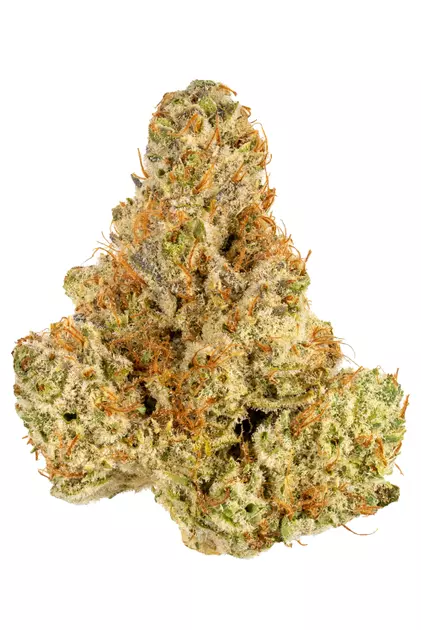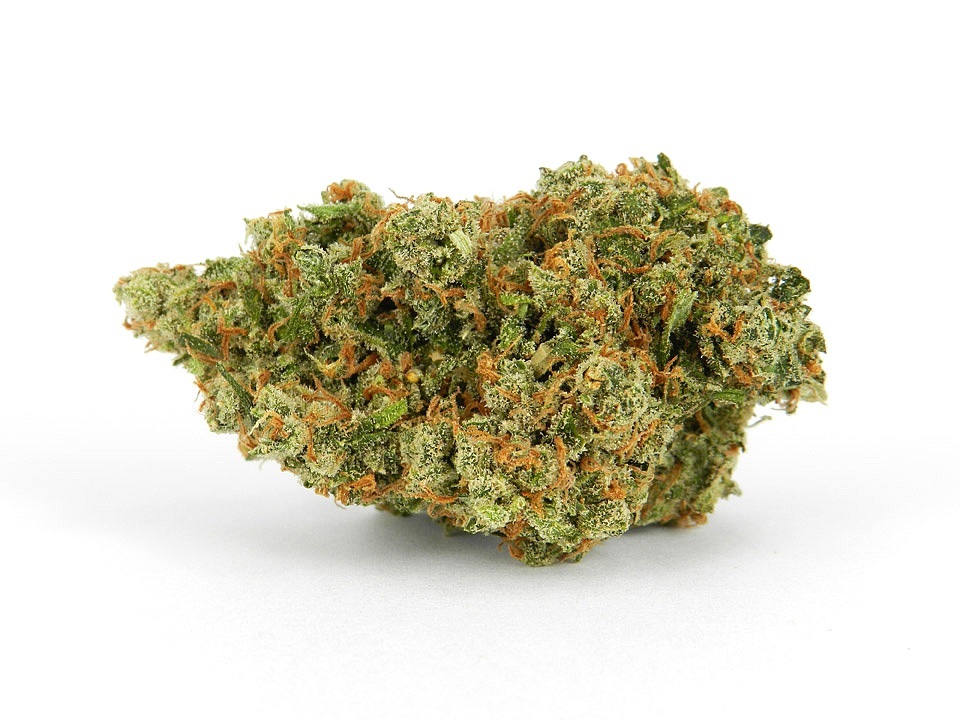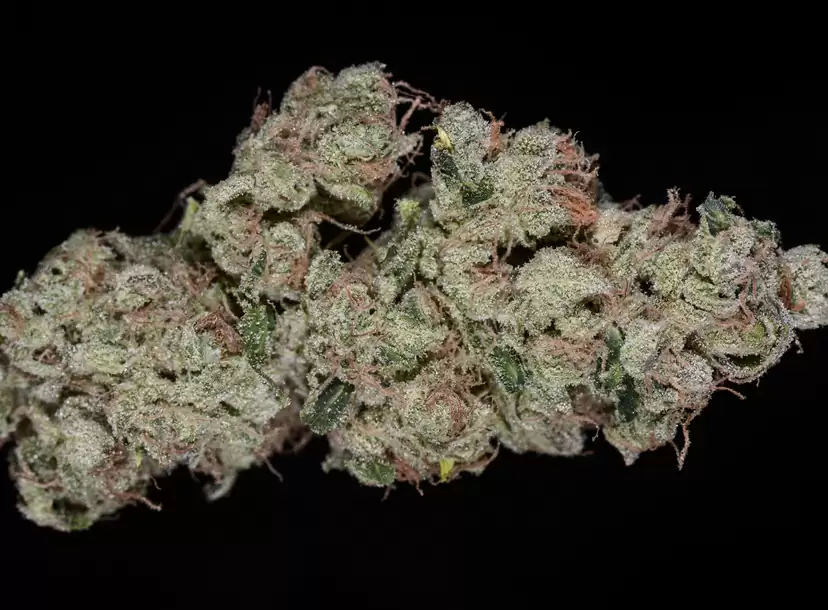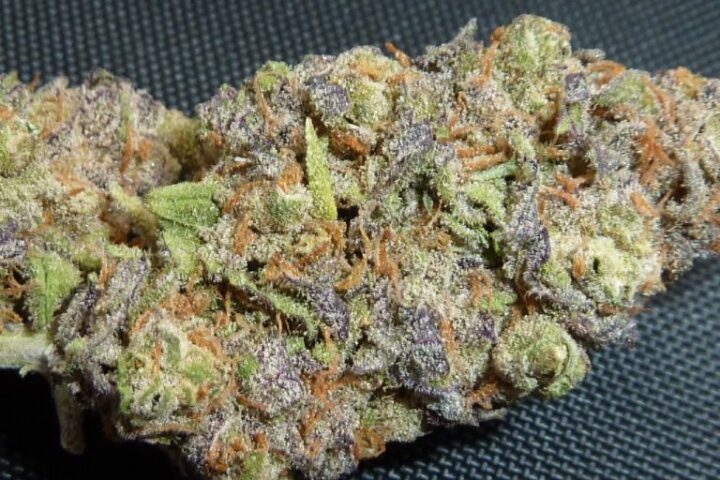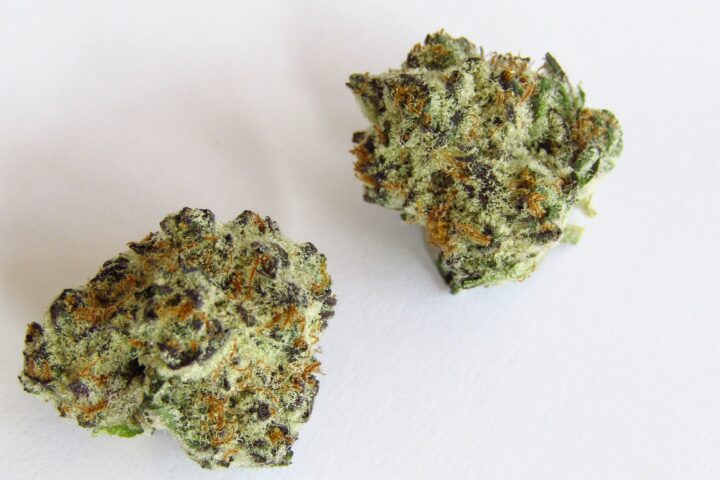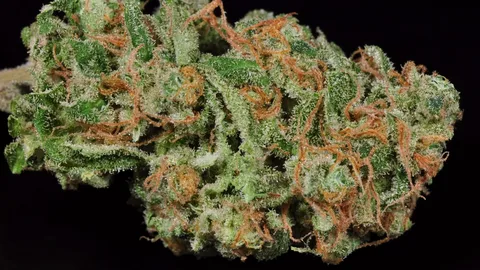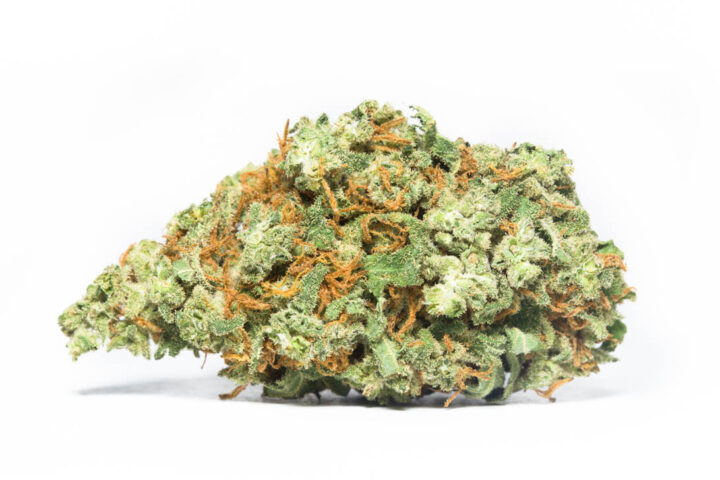Origins and Genetics
Description of Snow Cone Strain
The origins of the Snow Cone strain are not well-documented, but it is believed to be a result of cross-breeding between two popular cannabis strains, likely Blueberry and a high-CBD strain such as Harlequin or Sour Tsunami.
This hybridization aimed to combine the potent psychoactive properties of THC with the therapeutic benefits of CBD, resulting in a strain that is both relaxing and energizing at the same time. The exact breeder responsible for creating Snow Cone remains unknown, but it has since become a popular choice among medical marijuana patients and recreational users alike.
The genetic makeup of Snow Cone is primarily indica-dominant, meaning it possesses a higher concentration of indica genes than sativa genes. This is reflected in its short stature, typically reaching maturity within 6-8 weeks, and its high yields of dense, resinous buds.
The strain’s cannabinoid profile is also noteworthy, boasting an average THC content of around 15-20% and a CBD content of 10-12%. The balanced ratio of these two cannabinoids contributes to Snow Cone’s unique effects, which can range from deeply relaxing to mildly euphoric.
Snow Cone has also been reported to possess a complex terpenoid profile, characterized by the presence of myrcene, limonene, and linalool. These terpenes are responsible for the strain’s distinctive flavor and aroma, often described as sweet and fruity with notes of earthy undertones.
Overall, Snow Cone is an intriguing strain that combines the benefits of indica-dominant genetics with the therapeutic potential of CBD. Its unique effects and complex profile make it a popular choice among cannabis enthusiasts seeking a relaxing yet energizing experience.
The versatility of Snow Cone also makes it an excellent addition to any marijuana collection, suitable for both daytime use and evening relaxation sessions. As research continues to uncover the full potential of this strain, its popularity is likely to endure as a top choice among medical marijuana patients and recreational users alike.
Snow Cone is a hybrid cannabis strain that combines the genetics of Skunk #1 with an unknown indicadominant parent, creating a balanced and potent effect.
Snow Cone is a hybrid cannabis strain that offers users a balanced and potent experience, making it a popular choice among cannabis enthusiasts.
The origins of Snow Cone can be traced back to the genetics of Skunk #1, a legendary indica-dominant strain known for its high THC content and robust effects. By combining the genetics of Skunk #1 with an unknown indica-dominant parent, the breeders of Snow Cone have created a unique and versatile strain that appeals to a wide range of users.
The result is a strain that combines the best qualities of both parents: the high THC content and robust effects of Skunk #1, and the added potency and stability of its unknown indica-dominant parent. This balanced and potent effect makes Snow Cone an excellent choice for users who want to experience the benefits of cannabis without feeling overwhelmed or anxious.
In terms of its genetic makeup, Snow Cone is a complex strain that requires careful consideration when growing. As a hybrid strain, it combines the characteristics of both indica-dominant and sativa strains, making it more challenging to cultivate than a pure indica or sativa strain. However, with the right care and attention, growers can coax out the full potential of Snow Cone, resulting in a bountiful harvest of high-quality buds.
One of the key benefits of Snow Cone is its ability to provide users with a clear-headed, yet relaxing effect. This makes it an excellent choice for users who want to unwind and relax without feeling sedated or disoriented. Whether used during the day or evening, Snow Cone can help users find their balance and achieve a state of calm and well-being.
Cannabinoid and Terpene Profile
The Snow Cone strain is a cannabis cultivar that has gained popularity among enthusiasts due to its unique flavor profile and potency. To understand the genetic makeup and characteristics of this strain, it’s essential to delve into its origins.
As a descendant of the classic Blueberry strain, Snow Cone inherits many of its desirable traits, including its compact size and high-yielding production. The exact parentage of Snow Cone is not well-documented, but it is believed to be a cross between a Blueberry phenotype and another unknown strain. This genetic combination has resulted in a distinctive cannabinoid and terpene profile that sets Snow Cone apart from other varieties.
Cannabinoids are the primary psychoactive compounds found in cannabis plants, responsible for producing the “high” associated with marijuana use. The two primary cannabinoids in Snow Cone are THC (tetrahydrocannabinol) and CBD (cannabidiol). THC is the more potent of the two, producing euphoric effects and a sense of relaxation. In contrast, CBD has been shown to have therapeutic properties, including reducing inflammation and alleviating anxiety.
A Snow Cone strain typically contains between 15-20% THC, making it moderately to highly potent. However, the exact cannabinoid content can vary depending on factors such as growing conditions and genetics. CBD levels in Snow Cone are generally lower, ranging from 0.5-2%, although some phenotypes may exhibit higher CBD concentrations.
The terpene profile of Snow Cone is another unique aspect of this strain. Terpenes are a class of compounds found in plants that contribute to their aroma and flavor. Snow Cone’s terpene profile features a blend of limonene, myrcene, and pinene, giving the strain its characteristic sweet, fruity, and earthy flavors. Limonene is responsible for the citrus notes in Snow Cone, while myrcene provides a herbal undertone. Pinene adds a pine-like flavor that complements the other terpenes.
The combination of cannabinoids and terpenes in Snow Cone creates a balanced and relaxing effect, making it suitable for evening use or as a therapeutic aid during periods of stress. The strain’s relatively high THC content means it may not be suitable for novice users, but experienced consumers will appreciate the Snow Cone’s distinct flavor profile and potency.
Effects and Medical Benefits
Pain Relief and Relaxation
The Snow Cone weed strain is a unique and highly sought-after cannabis variety, known for its distinct effects and numerous medical benefits. Its popularity stems from its ability to provide long-lasting pain relief, deep relaxation, and an overall sense of well-being.
One of the key aspects of Snow Cone is its high THC content, which ranges from 20-25%. This high concentration of THC contributes to its potent effects, making it a preferred choice for medicinal cannabis users. The strain’s CBD levels are relatively low, at around 1-2%, although this has not been found to negatively impact its therapeutic benefits.
The pain-relieving properties of Snow Cone make it an excellent option for individuals suffering from chronic pain, arthritis, and multiple sclerosis. Its ability to numb the body and reduce inflammation makes it a valuable asset in managing pain associated with various conditions.
In terms of relaxation, Snow Cone is renowned for its ability to induce deep sleep and reduce stress levels. This makes it an excellent choice for individuals struggling with anxiety, depression, or insomnia. The strain’s sedative properties are potent enough to help users fall asleep quickly and maintain a restful slumber throughout the night.
The effects of Snow Cone typically begin within 10-15 minutes after consumption and can last anywhere from 2-4 hours, depending on the individual’s tolerance and method of consumption. During this time, users may experience feelings of euphoria, happiness, and a general sense of well-being.
Medical Benefits
- Pain Relief
Snow Cone is highly effective in reducing chronic pain, arthritis, and multiple sclerosis symptoms. Its potent THC content numbs the body, reducing inflammation and providing long-lasting relief.
- Relaxation
The strain’s sedative properties induce deep sleep, reducing stress levels and promoting relaxation. This makes it an excellent choice for individuals struggling with anxiety, depression, or insomnia.
Pain Relief and Relaxation Mechanisms
- Cannabinoids Interact with Endocannabinoid System (ECS)
The ECS is a complex network of receptors, chemicals, and metabolic pathways. Cannabinoids interact with the ECS to produce their therapeutic effects.
- THC Blocks Pain Signals
Snow Cone’s high THC content blocks pain signals from reaching the brain, reducing the perception of pain.
- CBD Reduces Inflammation
The strain’s CBD levels contribute to its anti-inflammatory properties, reducing inflammation and promoting relaxation.
Precautions
- Dosage
The recommended dosage for Snow Cone is around 5-10 mg THC per session. Start with a low dose to avoid overwhelming effects.
-
- Tolerance
Individuals with high tolerance may require more potent doses to achieve the desired effects.
Conclusion
The Snow Cone weed strain is a unique and highly sought-after cannabis variety, offering numerous medical benefits and potent pain relief. Its distinct effects make it an excellent choice for individuals struggling with chronic pain, anxiety, depression, or insomnia. As with any cannabis product, please consult with a healthcare professional before using Snow Cone to ensure safe and effective use.
Snow Cone is known for its analgesic and sedative properties, making it effective in relieving chronic pain and promoting relaxation. Studies from the National Institute on Drug Abuse suggest that THC, a primary cannabinoid found in cannabis, can help reduce pain perception.
The Snow Cone weed strain has gained significant attention for its potential therapeutic benefits, particularly in managing chronic pain and promoting relaxation. Research on cannabis has revealed various analgesic and sedative properties, which are attributed to its rich cannabinoid profile.
One of the primary cannabinoids found in Snow Cone is THC (Tetrahydrocannabinol), a compound that has been extensively studied for its analgesic effects. According to the National Institute on Drug Abuse, THC can help reduce pain perception by interacting with the body’s endocannabinoid system.
The therapeutic benefits of Snow Cone are multifaceted and include:
- Pain relief: The analgesic properties of Snow Cone make it an effective treatment for managing chronic pain, including conditions such as fibromyalgia, multiple sclerosis, and arthritis.
- Relaxation and stress relief: The sedative effects of Snow Cone can help promote relaxation and reduce stress levels, making it an excellent option for individuals dealing with anxiety disorders or insomnia.
- Mood enhancement: The euphoric effects of THC in Snow Cone may contribute to improved mood and reduced symptoms of depression.
While research on the medical benefits of cannabis continues to grow, it is essential to note that more studies are needed to fully understand the potential therapeutic applications of Snow Cone. However, preliminary findings suggest that this strain may be a valuable tool in managing various health conditions, and further research should be conducted to explore its full potential.
In conclusion, the Snow Cone weed strain presents a promising opportunity for those seeking relief from chronic pain and relaxation. With its rich cannabinoid profile and analgesic properties, it is an excellent option for individuals looking for natural alternatives to traditional medications. As research continues to uncover the vast therapeutic benefits of cannabis, it is likely that Snow Cone will become increasingly recognized as a valuable resource in the world of medical marijuana.
Anxiety and Insomnia Relief
The Snow Cone weed strain is a popular indica-dominant hybrid that has gained attention for its potential medical benefits and unique effects. Its ancestors are believed to be OG Kush and Huckleberry Diesel, which contribute to its potent and distinct properties.
One of the key effects of Snow Cone is its ability to induce deep relaxation and reduce anxiety levels. Users report feeling calm and serene after consuming this strain, making it an excellent choice for those seeking relief from stress or anxiety disorders.
Snow Cone also shows promise in alleviating symptoms of insomnia, allowing users to enjoy restful sleep and wake up feeling refreshed. Its sedative properties make it an ideal choice for individuals who struggle with falling asleep or staying asleep throughout the night.
The strain’s high THC content contributes to its potent effects, but it also contains a moderate amount of CBD, which is known for its therapeutic benefits and ability to counteract some of the psychoactive effects of THC. This balance makes Snow Cone a desirable choice for those seeking relief from chronic pain, inflammation, or other medical conditions without experiencing overwhelming anxiety or paranoia.
Furthermore, Snow Cone has been reported to have several medical benefits, including reducing muscle spasms and inflammation, which can be beneficial for individuals with multiple sclerosis or fibromyalgia. Its potential to alleviate symptoms of ADHD and PTSD also makes it an intriguing option for those seeking alternative treatments for these conditions.
It’s worth noting that the effects of Snow Cone may vary depending on individual tolerance levels and consumption methods. However, overall, this strain is known for its ability to provide long-lasting relief from anxiety and insomnia, making it a valuable addition to any medical cannabis regimen.
For those interested in trying Snow Cone, it’s essential to consult with a healthcare professional or dispensary expert to determine the optimal dosage and consumption method. As with any cannabis product, start with low doses and gradually increase as needed to ensure a comfortable and therapeutic experience.
The strain’s indicadominant profile also helps alleviate anxiety and insomnia by regulating sleep patterns and reducing stress levels.
The Snow Cone weed strain is a popular and highly sought-after cannabis variety, prized for its unique combination of effects and medical benefits.
One of the most notable characteristics of Snow Cone is its indica-dominant profile, which provides a relaxing and calming experience for users. This makes it an excellent choice for individuals seeking relief from stress, anxiety, and insomnia.
The strain’s ability to regulate sleep patterns has made it a favorite among insomniacs, who often struggle with falling asleep or staying asleep throughout the night. By promoting relaxation and reducing stress levels, Snow Cone helps users achieve a restful and rejuvenating sleep, essential for physical and mental well-being.
In terms of medical benefits, Snow Cone has been reported to provide relief from a range of conditions, including:
- Chronic pain: The strain’s high CBD content makes it an effective analgesic, reducing inflammation and alleviating chronic pain.
- Anxiety and depression: Snow Cone’s indica-dominant profile helps to regulate mood and reduce anxiety levels, making it a popular choice for individuals struggling with mental health conditions.
- Insomnia and sleep disorders: As mentioned earlier, Snow Cone’s ability to promote relaxation and regulate sleep patterns makes it an excellent choice for insomniacs and those suffering from other sleep disorders.
In addition to its medical benefits, Snow Cone is also prized for its unique terpene profile, which provides a distinctive and refreshing flavor experience. Users often describe the taste as sweet and fruity, with hints of citrus and mint.
Overall, the Snow Cone weed strain offers a unique combination of effects and medical benefits that make it an excellent choice for those seeking relief from stress, anxiety, and insomnia. Its high CBD content and indica-dominant profile provide a relaxing and calming experience, while its terpene profile offers a refreshing and fruity flavor experience.
Cultivation and Growing Tips
Nutrient Requirements
Cultivating Snow Cone weed requires careful attention to its nutrient needs as it grows from seedling to mature plant. As a strain, Snow Cone is known for its unique flavor profile and high THC content.
The ideal growing conditions for Snow Cone include maintaining temperatures between 65-75°F (18-24°C) during the day and no lower than 55°F (13°C) at night. It’s also essential to provide a consistent humidity level of around 40-50% and sufficient light, typically in the range of 18-20 hours of direct sunlight per day.
When it comes to nutrients, Snow Cone weed is relatively high-maintenance. To promote healthy growth, you’ll need to provide your plant with a balanced fertilizer that includes nitrogen (N), phosphorus (P), and potassium (K). A general rule of thumb is to use a 20-20-20 N-P-K ratio for seedlings and vegetative growth stages.
However, as Snow Cone weed transitions into the flowering stage, you’ll need to switch to a bloom-focused fertilizer that is high in phosphorus. This will help promote the development of buds and increase overall yields. Some popular options for bloom fertilizers include those with N-P-K ratios of 5-15-25 or 10-20-30.
Another crucial aspect of growing Snow Cone weed is pruning and training. Regular pruning helps control plant height, encourages bushy growth, and allows for more even light distribution. This process also promotes air circulation around the plant, reducing the risk of fungal diseases and pests.
Training your plant involves guiding its stem to grow in a particular direction or shape, promoting optimal exposure to light and increasing yields. Techniques like topping, LST (Low Stress Training), and SCROG (Screen of Green) can be used to achieve this goal.
Additionally, Snow Cone weed requires regular monitoring for pests and diseases. Regularly inspect your plant for signs of damage or infection, such as whiteflies, aphids, spider mites, powdery mildew, or root rot. If you notice any issues, take prompt action to treat the problem using organic or chemical methods.
Maintaining optimal pH levels is also essential when growing Snow Cone weed. A slightly acidic to neutral soil pH (around 6.0-7.0) will provide your plant with the best opportunity for nutrient uptake and overall health.
Snow Cone requires a balanced nutrient diet to promote healthy growth and development. A study published in the Journal of Agricultural and Food Chemistry found that cannabis plants require essential nutrients like nitrogen, phosphorus, and potassium to thrive.
To ensure optimal growth and development, Snow Cone cannabis plants require a balanced nutrient diet that provides them with the necessary building blocks for healthy plant development.
The most crucial nutrients for cannabis plants are nitrogen (N), phosphorus (P), and potassium (K), which play a vital role in promoting healthy growth, photosynthesis, and overall plant well-being. These macronutrients can be categorized as follows:
- Nitrogen is essential for leaf growth, development, and chlorophyll production.
- Phosphorus promotes root growth, flower and bud development, and overall plant energy.
- Potassium helps maintain plant hydration, facilitates nutrient uptake, and regulates various physiological processes.
In addition to these macronutrients, cannabis plants also require micronutrients such as calcium (Ca), magnesium (Mg), sulfur (S), iron (Fe), manganese (Mn), boron (B), copper (Cu), molybdenum (Mo), and zinc (Zn) for optimal growth and development.
When it comes to growing Snow Cone, a well-balanced fertilizer should be used during the vegetative stage to promote healthy leaf growth and development. During the flowering stage, a bloom-specific fertilizer can be used to enhance bud production and overall plant yield.
Avoid over-fertilizing your Snow Cone plants, as this can lead to nutrient burn and other detrimental effects on plant health. Regular pH testing is crucial to ensure that your nutrient solution is within the optimal range for cannabis growth.
Some popular fertilizers for growing Snow Cone include:
- Peters 20-20-20: A balanced, water-soluble fertilizer that provides essential nutrients for healthy plant growth and development.
- Dyna-Gro Foliage-Pro: A high-phosphorus fertilizer specifically designed to promote healthy foliage growth and prevent nutrient deficiencies.
- General Hydroponics FloraBloom: A bloom-specific fertilizer that provides essential micronutrients for optimal flower and bud development.
It’s worth noting that Snow Cone is a high-magnesium strain, so be sure to monitor your plants’ magnesium levels closely to avoid nutrient deficiencies. Regular pH testing and adjustments will also help ensure optimal nutrient uptake and plant health.
With proper care, attention, and fertilization, you can promote healthy growth and development in your Snow Cone plants, leading to a bountiful harvest of high-quality cannabis buds.
Climate and Environment
The cultivation and growing tips for Snow Cone weed strain can be quite challenging due to its unique genetic makeup. However, with the right conditions and care, this strain can thrive and produce high-quality buds.
To begin with, it’s essential to understand that Snow Cone is a sativa-dominant hybrid, which means it prefers warmer temperatures and well-ventilated areas. The ideal temperature for growth ranges from 65°F to 80°F (18°C to 27°C), while the humidity level should be kept between 40% and 60%.
When planting Snow Cone seeds, make sure the soil is rich in nutrients and has good drainage properties. A mix of organic matter such as compost or manure can help promote healthy growth. Water your plants regularly, but avoid overwatering, which can lead to root rot and other issues.
Pruning and training are crucial for Snow Cone’s growth. Provide support for the plant using trellises or stakes to control its height and encourage bushy growth. Prune the top set of branches to promote lateral growth and increase yields.
SNOW CONE TIPS FOR OPTIMAL GROWTH:
- Pest Control: Regularly inspect your plants for signs of pests, such as spider mites, mealybugs, or aphids. Isolate infected areas, and use organic pest control methods whenever possible.
- Soil pH Level: Maintain a slightly acidic to neutral soil pH level between 6.0 and 7.0 for optimal nutrient uptake.
- Micronutrient Deficiency: Supplement your plants with micronutrients such as iron, manganese, or boron if necessary, as these deficiencies can severely impact growth.
Keep in mind that Snow Cone is a sensitive strain, and its flowering phase is highly dependent on the environment. Provide 18-24 hours of light during the vegetative stage and adjust to 12-14 hours of light during the flowering phase. Be cautious of temperature fluctuations, as they can impact yields.
In terms of climate and environment, Snow Cone prefers a Mediterranean climate with mild winters and warm summers. Avoid planting in areas prone to frost or extreme weather conditions. Keep your plants away from direct sunlight, especially in warmer climates, to prevent burning.
By following these cultivation and growing tips for Snow Cone weed strain, you’ll be well on your way to producing high-quality buds with unique characteristics. Remember to monitor temperature, humidity levels, and nutrient uptake closely to ensure optimal growth.
The strain grows best in a Mediterranean climate with warm temperatures and low humidity levels, ideal for outdoor cultivation in regions with similar conditions.
The Snow Cone strain thrives under specific environmental conditions, making it a great candidate for outdoor cultivation in regions with a Mediterranean climate. This type of climate boasts warm temperatures and low humidity levels, which are ideal for promoting healthy growth and maximizing yields.
When cultivating the Snow Cone strain outdoors, ensure that you provide your plants with sufficient sunlight. They require at least 6 hours of direct sunlight per day to undergo photosynthesis and develop robust buds.
A Mediterranean climate typically experiences hot summers and mild winters. Make sure to plant the Snow Cone strain in an area with well-draining soil and full sun exposure, allowing it to absorb essential nutrients from the soil and light from the sun.
When growing the Snow Cone strain indoors, replicate a Mediterranean environment by providing your plants with grow lights that mimic natural sunlight. These specialized LED grow lights should be adjusted to simulate the warm temperatures and low humidity levels found in regions with a Mediterranean climate.
The ideal temperature range for the Snow Cone strain is between 65°F (18°C) and 75°F (24°C). This temperature range promotes healthy growth, maximizes yields, and minimizes stress on the plants. Keep your indoor grow area at this optimal temperature by using heating and cooling systems as needed.
Moderate watering is crucial for maintaining the Snow Cone strain’s health and promoting robust growth. Water your plants when the top inch of soil feels dry to the touch, allowing them to receive essential moisture without developing waterlogged roots.
The pH level in the soil should be between 6.0 and 7.0 for optimal nutrient uptake by the Snow Cone strain. Monitor your soil’s pH levels regularly and adjust accordingly using organic amendments or chemical fertilizers.
When cultivating the Snow Cone strain, prune your plants regularly to promote bushy growth and increase yields. Remove any dead or weak leaves to prevent disease spread and encourage healthy development.
The Snow Cone strain is known for its resilience in the face of pests and diseases. However, keep a watchful eye out for common issues such as spider mites, mealybugs, and powdery mildew by inspecting your plants regularly. Use organic pest control methods whenever possible to maintain a chemical-free environment.
For optimal growth, harvest your Snow Cone strain when the buds are fully developed and have reached their maximum weight and size. Cut your plants carefully using clean pruning scissors or trimming equipment to prevent contamination and minimize waste.
After harvesting, cure your buds by leaving them to dry in a cool, dark area with good air circulation. Monitor the humidity levels, maintaining them between 40% and 50%, to ensure that the buds remain healthy and retain their potency.
- Xeno Weed Strain Information - October 9, 2024
- White Berry Aka White Raspberry Weed Strain Information - October 8, 2024
- Super Jack Aka Super Jack Herer, Super Silver Jack Weed Strain Information - October 5, 2024

